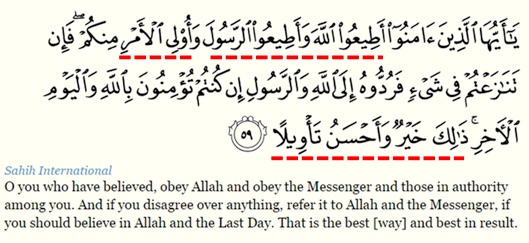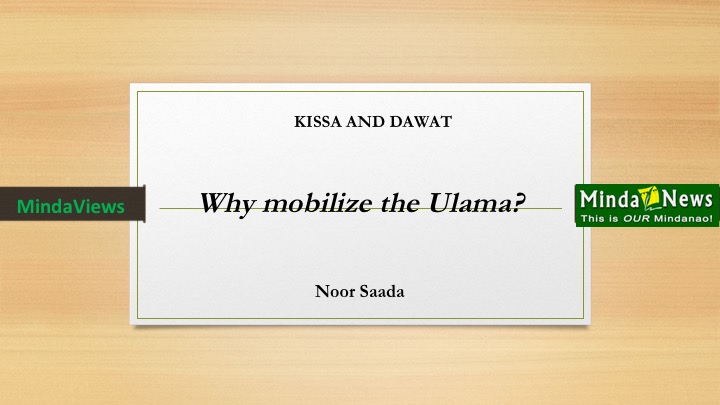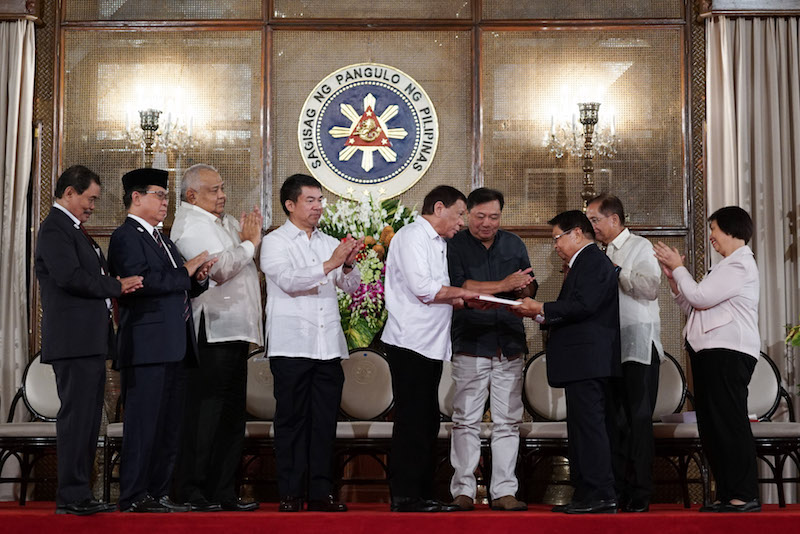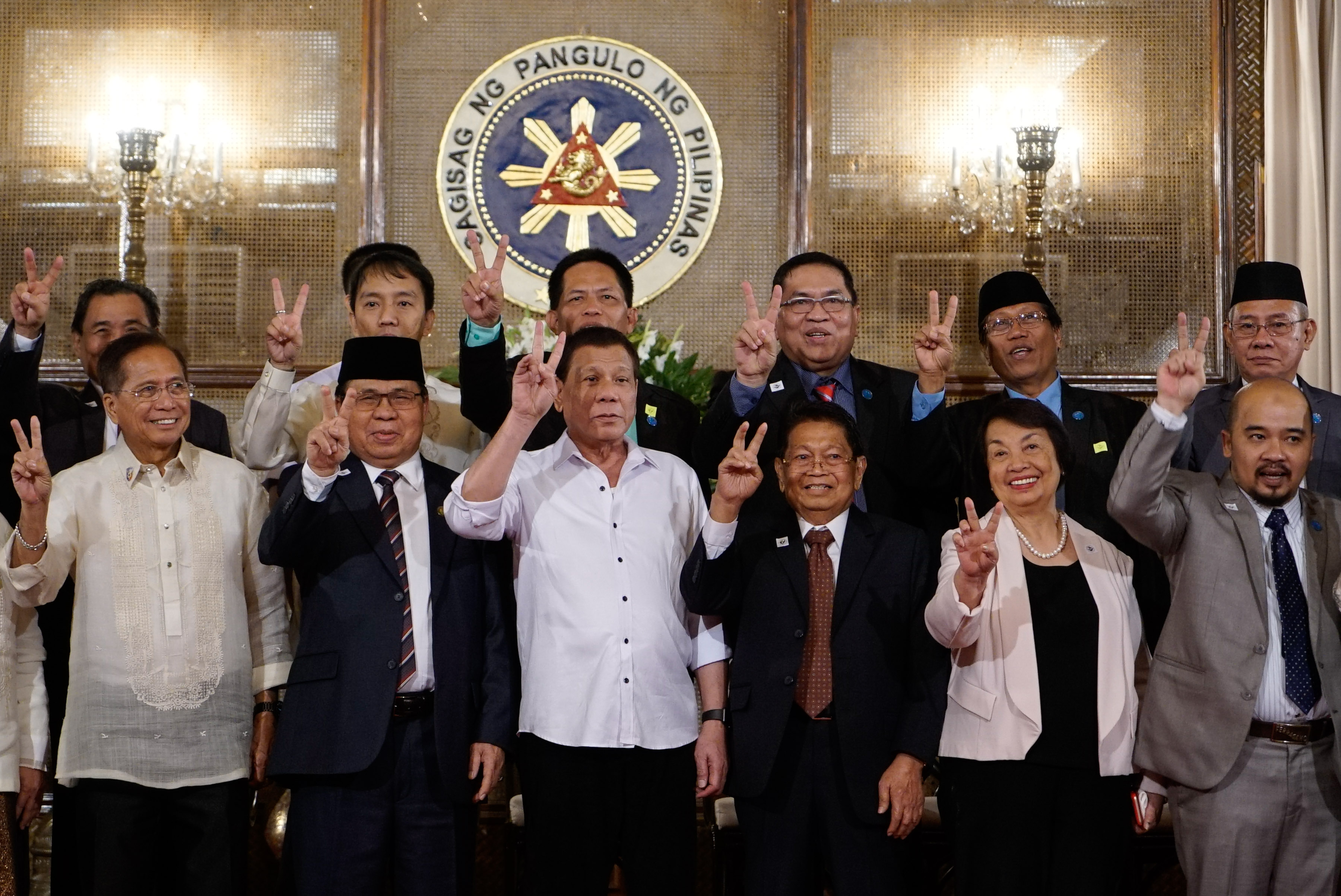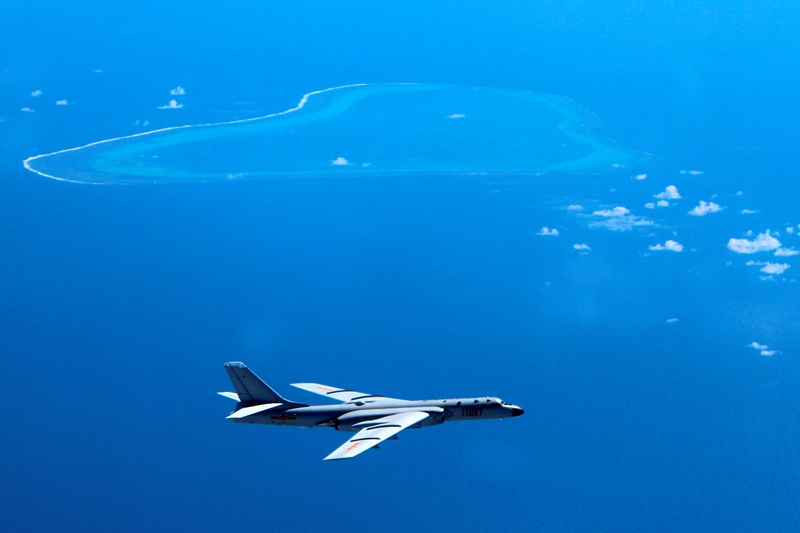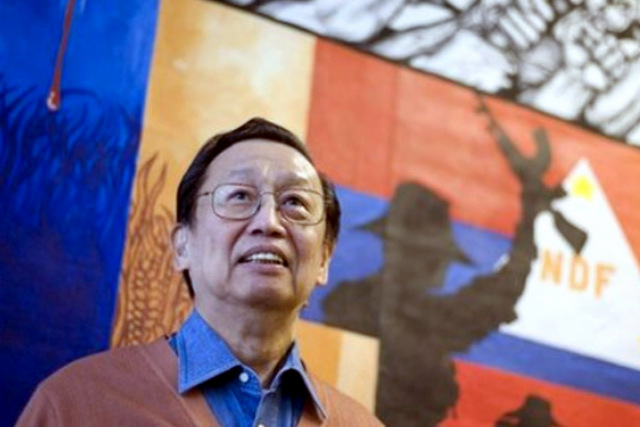Posted to the Small Wars Journal (Jul 16):
Government Approaches to Islamic-Based Militant Radicalization in Southeast Asia (by John Zambri)
Southeast Asia has traditionally been defined by religious tolerance, moderation, and pluralism.
[i] Home to the largest concentration of Muslims in the world, approximately 180 million, it is a region that is characterized by Islam’s success in facilitating the development of civil society and democracy and demonstrating that Islam is not anathema to secular democracy.
[ii] Southeast Asian Muslims have traditionally stood apart from the Arab Islamic orthodoxy and have eschewed the violence and literal interpretations of Islam that have defined Islam in the Middle East. Considered the “Islamic Fringe” by Muslim coreligionists, Southeast Asian Muslims embraced secular pursuits and have traditionally shunned the radical variants of Islam common in the Middle East.
[iii] Fanatical, rigid, and militant Islam does not appear to hold significant appeal to the vast majority of Muslims in the region. However, although Islam in Southeast Asia has been moderate in character, it is undergoing a process of revivalist change that in some segments of its society, have taken on extremist overtones.
[iv] Terrorism and extremist views, particularly as it relates to Islamic extremists, is not new to the region. The Jemaah Islamiyah (JI) in Indonesia, Malaysia, Singapore, Thailand and the Philippines, the Abu Sayyaf (ASG) and Moro Islamic Liberation Front (MILF) in the Philippines, and the Kampulan Mujiheddin Malaysia (KMM) in Malaysia to a lesser degree, to name a few, have been active in these countries specifically and in the region in general.
[v] It is not the aim of this work to render a comprehensive and detailed description and analysis, but to provide a brief overview of the successes and failures if salient government policies and practices relative to radicalization in the Southeast Asian region. In this work I review and analyze the issue of radicalization to include government responses to terrorism throughout Southeast Asia in an effort to examine how effective the counter radicalization and counter-terrorism strategies employed by the various states have been. I will also briefly discuss the government organizational structure and the problems faced by the various Southeast Asian government agencies in addressing the Middle Eastern influence on emerging radicalization specifically posed by Islamic based groups. Finally, I will touch on the various Southeast Asian government bureaucracies and its capability to respond to the threats posed by Islamic militant groups.
Southeast Asia has been the home of indigenous Islamic militant groups for decades. According to Bruce Vaughn, analyst for Southeast Asian affairs, Congressional Research Service, traditional linkages among these groups were relatively weak and most operated only in their own country or islands, focusing on domestic issues such as promoting the adoption of Islamic law (sharia) and seeking independence from central government control.
[vi] This is evidenced by the local nature of the Islamic extremist threat in Southeast Asia as revealed in recent reports that virtually no Southeast Asians were reported to have travelled to other countries, most notably Afghanistan or Iraq, to fight the Jihad.
[vii] This is due on the one hand to the fact that Muslim grievances are local in nature – the need for economic, political, and social opportunities and equality in specific countries – and not global, and on the other hand not due to any mystical or mythical attribution to Al Qaeda or ISIS rhetoric.
Externally, the lack of a global jihadist view and participation, to a large extent, is attributed to the successes by various Southeast Asian governments in fighting radical militant extremism before it manifests into violence through robust duel law enforcement and counter-extremist narrative strategy.
[viii] The combined approach targets potential individual perpetrators for arrest and interdiction and affected communities through encouragement of secular Muslim ideals, which undermines the arguments of extremist. Though many of the efforts employed by Southeast Asian governments have kept extremist violence from becoming systemic, Islamic fundamentalism has been growing steadily over the past three decades laying the inroads to facilitate radicalization and by extension extremist violence.
[ix] Within several states there exist enclaves that are beginning to at least acknowledge that they share the extremist grievances.
[x] What is even more disturbing about this development is that radical Islamists are increasingly relying on emerging networks in different states for assistance, financing, and training.
[xi] The 9/11 attacks brought the issues of radicalization and Islamic extremism in Southeast Asia to prominence. The responses of countries in the region to radicalization and extremist violence since the 9/11 attacks, have varied with the intensity of their respective concerns and perceptions about the threat to their international standing and domestic stability and politics.
[xii] Singapore, Malaysia, and the Philippines were quick to institute aggressive counter-radicalization and counter-terrorism policies and strategies, to include intelligence sharing and combined military and law enforcement initiatives, while Indonesia was initially reluctant to acknowledge that it had domestic or international terrorist connections. Only after the JI carried out several attacks, most serious of which was the Bali bombing in 2002, did the Indonesian government initiate aggressive and proactive counter-terrorism action.
[xiii] In Indonesia, government officials estimate that two percent of Muslims fit within the “radical” rubric.
[xiv] Initially that may seem small. However, in a nation that totals approximately 240 million people, ninety percent of which are Muslims, two percent works out to be well over four million potential radical Islamist.
[xv] To combat growing radical Islamic violence the Indonesian government authorized the creation and deployment of Detachment 88. Detachment 88 is the Indonesian national police force’s main counter-terror unit and is thought responsible for much of the success that Indonesia has had in arresting hundreds suspects of which many have been tried and convicted.
[xvi] Indonesia has also reportedly had success through its program of deradicalisation which advocates and incorporates political involvement of radical elements, development of counter-narratives, and strategies that seeks to identify at risk individuals and communities and to bring both the extremist and their families back into the fold of normal society in addition to preventing, deterring, and punishing terrorists.
[xvii] Although there is a significant number of Indonesian Muslims that constitute the radical Islamic elements, radical Islamist that are moved to violence make up a very small proportion of the populace. This is reportedly due to Indonesia’s history of polity, society, and culture which are aligned with traditions of religious pluralism and tolerance.
[xviii] The moderate Muslim mainstream plays a leading role in the democratization of Indonesia and the construction of a robust civil and secular society, acting as a bull-work against systemic extremist ideologies.
[xix] Indonesia’s counter-radicalization and counter-terrorism efforts notwithstanding, radicalized groups and extremist violence continues to be on the rise.
[xx] Radicalization in the Philippines is particularly problematic. The Philippines is home to the ASG, MILF, and elements of JI. Their reported collaboration and cooperation has confirmed transnational linkages that facilitate radical influences. The main political objective for these groups has been separation and independence for the Muslim region of the southern Philippines. The vehicle for influencing radical sympathies is grievance centric. Playing on anti-government sentiments among the socially and politically disaffected, these terrorist groups are able to cultivate radical sympathies among the populace.
Evidence, including the testimonies of captured Jemaah Islamiyah leaders, has pointed to strong links between some elements of the MILF and JI, including the continued training of JI terrorists in MILF camps and the planning of terrorist operations. The Philippine National Intelligence Coordinating Agency estimated in mid-2009 that there were 30 to 40 JI cadre on Mindanao. A stronger collaborative relationship has developed between MILF commands and Abu Sayyaf since 2002, according to Zachary Abuza, a U.S. expert on Islamic terrorism in Southeast Asia.
[xxi] The Philippine government has been aggressive and proactive in their counter-terrorism efforts. Having a long standing history in fighting the ASG and MILF, the 9/11 attacks helped to secure increased funding and assistance from the United States. U.S. military and economic support reportedly has achieved successes. Philippine government operations against Abu Sayyaf and MILF have become more aggressive and effective on Basilan and Jolo. Abu Sayyaf strength has been eroded to an estimated 200-400, and key commanders have been killed.
[xxii] Philippine military commanders have maximized U.S. equipment, intelligence gathering, and planning support.
[xxiii] The U.S. military’s civic action projects on Basilan and Jolo (medical treatment, water purification installations, farm markets, renovation of schools) appear to have weakened support for Abu Sayyaf.
[xxiv] Not all Southeast Asian governments have sought kinetic anti-radicalism responses. Malaysia presents a dichotomy relative to counter-terrorism in the region.
Internally and externally Malaysia conducted a delicate balancing act. It faced the threat of radical groups such as the Kumpulan Militant Malaysia (KMM), which desired to overthrow the government and create an Islamic state internally. It faced a geopolitical image and standing in the region as a partner in the Southeast Asian counter-terrorism mission.
[xxv] To show support for the ‘war on terror’ and yet not agitate indigenous radical Islamist, Malaysia supported the joint decision with Singapore and Indonesia to increase patrolling of the Malacca Straits.
[xxvi] A closer look showed that Malaysia opposed the inclusion of U.S. forces as entry of western forces would infuriate radical Muslims and the dominant Muslim population in the region.
[xxvii] Malaysia understood this not just for the issue of sovereignty but also because of the expected Muslim reaction, especially after the U.S. invasions of Afghanistan and Iraq.
Malaysia’s policies are based on pragmatism. Islamic extremists were a major concern to Malaysian government, even before the 9/11 attacks. Regionally, Malaysia was a concern with groups like the Parti Islam Se Malaysia (PAS), which if provoked by Malaysian government alignment with U.S. counter-terrorism efforts, would increase the spread of Islamic extremism through the country.
[xxviii] An even greater concern was the MILF and the ASG, which had aspirations for a greater Islamic state in South East Asia. Malaysia has responded by acting as the mediator between the Philippine government and the MILF, again aiming not to support the ‘war on terror’, but to aid fellow Muslims and push the threat of Islamic fundamentalism way from its borders.
[xxix] Malaysia continued to increase its anti-terrorism efforts with arrests and detention of terrorist suspects and the creation of the South East Asia Regional Centre for Counter-Terrorism in 2003.
[xxx] Malaysia was fighting terrorism, not to gain any favor, but to turn back a wave of Islamic extremism. As it took anti-terrorist measures regionally and internationally, its foreign policy was pragmatic, taking into account the mindsets of Muslims. It also sought to improve Muslims and the image of Muslims, not by promoting conservative ideologies, but progressive and beneficial means, indirectly pushing back Islamic extremism.
[xxxi] Malaysian foreign policy will definitely continue to place Islam as a forefront of its foreign policy, and should continue to take a moderate stance.
[xxxii] Shortly after 9/11, Singaporean authorities, unlike Malaysian authorities, launched aggressive operations to counter terrorist activities.
[xxxiii] After many countermeasures were put in place, Singapore published A Fight Against Terror: Singapore’s National Security Strategy to document these operations.
[xxxiv] Singaporean government made it a policy directive to make their strategy available to their citizens because a major element in their fight against terror is involving their citizens and preparing them for their role in defending the country.
[xxxv] This is a total government approach that folds the citizenry into its counter-radicalization and counter-terrorism mission. Singapore’s strategy is broken down into 3 components: Prevention, Protection, and Response, which are the responsibility of the government but are developed into an integrated public/private citizen response.
[xxxvi] The various Southeast Asian governments have had to developed and formulate counter-radicalization policies and strategies that are unique to their respective cultures, political structures, and civil/military capabilities. There are no one method magic bullets. Counter-radicalization strategies require an integrated and interdisciplinary approach that involves both public and private resources. Most importantly it will required the participation of the populace as stakeholders in the government and in their security. To achieve this “buy in” the governments that make up the Southeast Asian states have to strive to win and maintain legitimacy. This is accomplished through whole of government programs that do not solely rely on kinetic responses, though they are integral in a multifaceted counter-radicalization strategy, but through a combination of both kinetic and non-kinetic responses. Non-kinetic responses include education, employment, counter-narratives, social, cultural, and religious outreach, as well as strategies that delegitimize extremist views.
The Philippine government initially concentrated on legal and military responses to radicalization and terrorism, but has since incorporated government programs that are aimed garnering legitimacy in the eyes of the citizenry. Indonesia and Singapore have employed an integrated response that emphasizes bringing even Islamic extremist into the political process, allowing them to have a political voice and forum to address and resolve grievances. Malaysia continues to straddle the political/religious fence. The rising religiously motivated violence in Malaysia has classified it as the new center of Islamic extremism. The region is home to the largest concentration of Muslims after South Asia and Malaysia cannot remain aloof from the rising tide of militancy in other parts of the Muslim World that affect its populace and government.
[xxxvii] Malaysia and Indonesia are not immune to Islamic extremism. Malaysia, in particular, has become the hotbed of extremism and exporting it to Indonesia and Brunei. It was even before the 2002 Bali bombings when extremists from Indonesia and Malaysia started interacting with their counterparts in Afghanistan and Pakistan. Straddling the fence is no longer an option to keep radicalization at bay.
According to Zachary Abuza the “radical fringe (of Islam) will continue to grow, as modernization leaves people more isolated and the political process leaves people more disenfranchised. The Islamists and their supporters will continue to gain in power unless the more secular Muslim community again provides a successful model of tolerant and modernist Islam that it has done fairly successfully for forty years.”
[xxxviii] Some analysts believe frustration from diminished expectations driven by economic austerity, the lack of effective political participation, and a sense of humiliation are at the core of why many Asian Muslims have become radicalized. Government policies can help by assisting and encouraging moderate elements in Asia to “respond to mainstream Muslims’ hopes for economic improvement and political participation ...education, balanced development, participatory governance, and civil peace” that will give hope to alienated individuals who might otherwise drift towards radicalism.
[xxxix]End Notes
[i] Zachary Abuza, Militant Islam in Southeast Asia: Crucible of Terror (Boulder: Lynne Rienner Publishers, 2003), 1.
[ii] Center for Strategic and International Studies (Washington, D.C.), Conflict, Community, and Criminality in Southeast Asia and Australia: Assessments from the Field: A Report of the CSIS Transnational Threats Project (Washington, DC: Center for Strategic and International Studies, 2009), iv; Abuza, Militant Islam in Southeast Asia, 3.
[iii] Abuza, Militant Islam in Southeast Asia, 3.
[iv] Bruce Vaughn, Islam In Southeast Asia, Report for Congress (Washington D.C.: Congressional Research Service, February 8, 2005), 2.
[v] Christopher S. Bond, The next Front: Southeast Asia and the Road to Global Peace with Islam (Hoboken, N.J: John Wiley & Sons, 2009), 7.
[vi] Bruce Vaughn et al., Terrorism in Southeast Asia, CRS Report for Congress (Washington D.C.: Congressional Research Service, October 16, 2009), 2.
[vii] Center for Strategic and International Studies (Washington, D.C.), Conflict, Community, and Criminality in Southeast Asia and Australia, vi.
[viii] Center for Strategic and International Studies (Washington, D.C.), Conflict, Community, and Criminality in Southeast Asia and Australia.
[ix] Abuza, Militant Islam in Southeast Asia, 4.
[x] Abuza, Militant Islam in Southeast Asia.
[xi] As defined in Militant Islam in Southeast Asia, radical Islamist are those who are trying to establish an Islamic state governed by Sharia through violence and extralegal means. Ibid.
[xii] Francis T. Miko, Removing Terrorist Sanctuaries: The 9/11 Commission Recommendations and U.S. Policy, CRS Report for Congress (Washington D.C.: Congressional Research Service, February 11, 2005), 14.
[xiii] Miko, Removing Terrorist Sanctuaries: The 9/11 Commission Recommendations and U.S. Policy.
[xiv] Bond, The next Front, 5.
[xv] Ibid
[xvi] Vaughn et al., Terrorism in Southeast Asia, 10.
[xvii] Ibid
[xviii] Center for Strategic and International Studies (Washington, D.C.), Conflict, Community, and Criminality in Southeast Asia and Australia, iv.
[xix] Ibid., 4.
[xx] Vaughn et al., Terrorism in Southeast Asia, 14.
[xxi] Ibid., 17; Abuza, Militant Islam in Southeast Asia, 14–19,22–24.
[xxii] Vaughn et al., Terrorism in Southeast Asia, 19.
[xxiii] Thomas H. Kean and et. al., eds., 911 Commission Reprot, n.d., 361–365.
[xxiv] Vaughn et al., Terrorism in Southeast Asia, 19.
[xxv] Jiesheng Li, “Malaysian Foreign Policy in the Post 9/11 Era | Global-Politics.co.uk,” Global Politics, accessed December 1, 2013,
http://www.global-politics.co.uk/issue5/Li/.
[xxvi] Ibid.
[xxvii] Muhammad Syukri Salleh, “Recent Trends In Islamic Revivalism In Malaysia,” Geocities.ws, accessed December 1, 2013,
http://www.geocities.ws/muhammadsyukri/STISLAMIKAReviv.html.
[xxviii] Ibid.
[xxix] Saad Khan, “Saad Khan: Rising Extremism in South East Asia: Dangerous Repurcussions,” January 11, 2010,
http://www.huffingtonpost.com/saad-khan/rising-extremism-in-south_b_4182... “Microsoft Word - RC CRT 2005-Entire S Version-4 27.doc - 65469.pdf,” 61, accessed December 1, 2013,
http://www.state.gov/documents/organization/65469.pdf.
[xxx] “Microsoft Word - RC CRT 2005-Entire S Version-4 27.doc - 65469.pdf.”
[xxxi] Li, “Malaysian Foreign Policy in the Post 9/11 Era | Global-Politics.co.uk.”
[xxxii] Center for Strategic and International Studies (Washington, D.C.), Conflict, Community, and Criminality in Southeast Asia and Australia; Vaughn, Islam In Southeast Asia; Li, “Malaysian Foreign Policy in the Post 9/11 Era | Global-Politics.co.uk.”
[xxxiii] U.S. Library of Congress, Terrorism in Southeast Asia, p. CRS-24.
[xxxiv] National Security Coordination Centre (Singapore), The Fight against Terror: Singapore’s National Security Strategy (Singapore: Produced, published, and distributed by National Security Coordination Centre, 2004), 18.
[xxxv] Ibid., 62.
[xxxvi] Ibid., 43.
[xxxvii] Khan, “Saad Khan: Rising Extremism in South East Asia: Dangerous Repurcussions.”
[xxxviii] Abuza, Militant Islam in Southeast Asia.
[xxxix] Ibid.
[John Zambri is a Detective III with the Los Angeles Police Department assigned to the Counter-Terrorism and Special Operations Bureau. He has been with the LAPD for 25 years and is also a Naval Reserve Intelligence officer with 20 years of service. He was mobilized and deployed as part of Operation Iraqi Freedom.]
http://smallwarsjournal.com/jrnl/art/government-approaches-to-islamic-based-militant-radicalization-in-southeast-asia

